Art & Exhibitions
Galerie Karsten Greve Offers a Rare Look at John Chamberlain’s Photographs
The artist, clearly, is more than his sculptures.
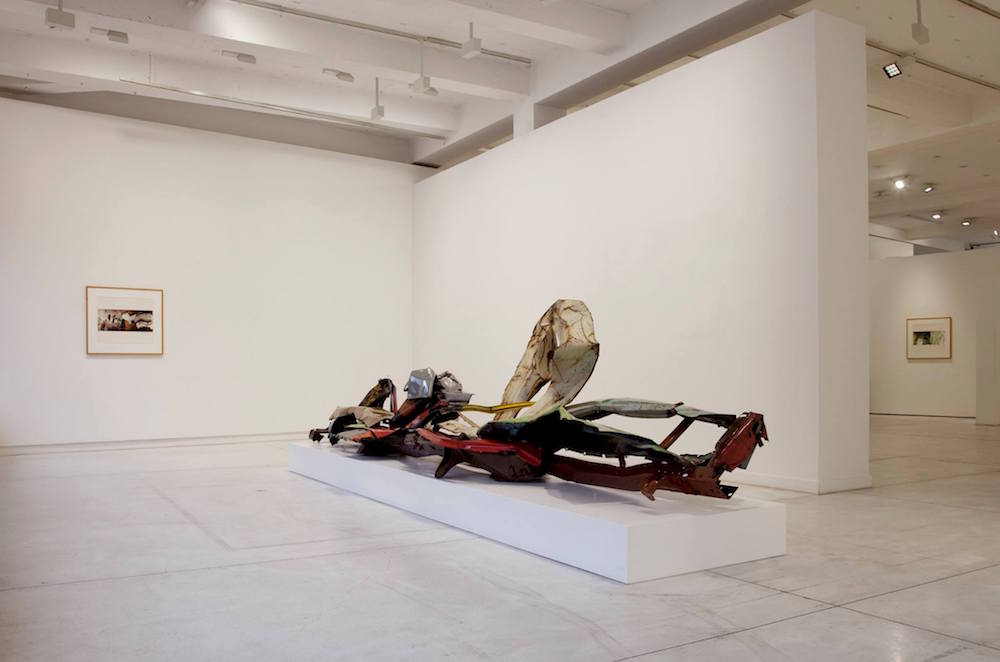
The artist, clearly, is more than his sculptures.

Henri Neuendorf

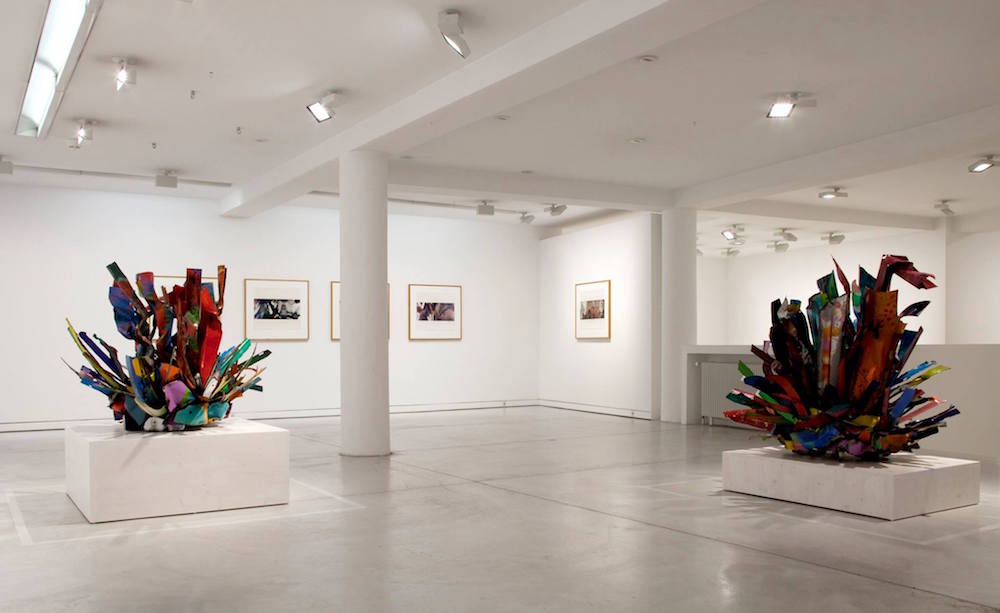
John Chamberlain Pastoraldebris (2007), and Bloodydrivetrain (2007) installation view.
Photo: © 2015 Fairweather & Fairweather LTD/Artists Rights Society (ARS), New York
As the city of Cologne geared up for its annual week-long Carnival, which kicked off this past weekend, Galerie Karsten Greve’s front windows were boarded up to protect them from overzealous revelers. But those who step inside the gallery, which is open during regular business hours during the festivities, will see a show of sculpture and lesser-known experimental photographs of American artist John Chamberlain.
This is the first posthumous solo exhibition of the sculptor’s work since his museum survey at Munich’s Pinakothek der Moderne in 2011—the year of his death at 84 years old. Despite being primarily known as a sculptor, Chamberlain also experimented with photography, the results of which are by and large an extension of his sculptural practice in terms of influences and visual dialogue.
“[The photographs] are about the distortion of energies and of objects and parts,” gallerist Karsten Greve told artnet News in a phone interview. “In the same way that he takes an auto part and distorts and bends it to make a new form, [Chamberlain] did the same with his photography.”
The show also brings together a number of Chamberlain’s signature colorful, twisted, metal sculptures fashioned from salvaged auto parts that the artist created in the middle and later part of his career.
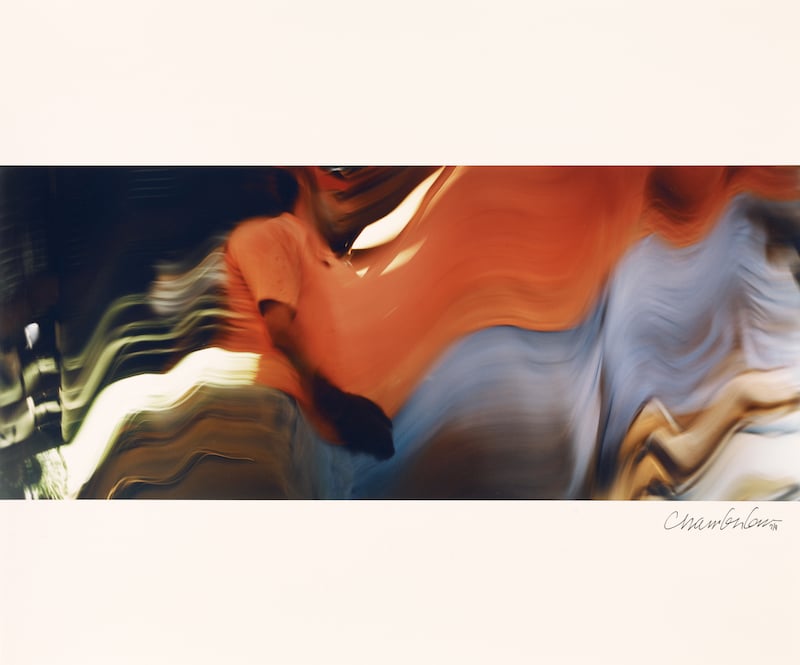
John Chamberlain Untitled (1992)
Photo: © 2015 Fairweather & Fairweather LTD/Artists Rights Society (ARS), New York
Greve went on to compare Chamberlain’s photographic work to the paintings of Willem de Kooning. “We did a show in Paris with [Chamberlain’s] photos and paintings of de Kooning and one had to ask oneself who made what first: de Kooning the paintings, or Chamberlain the photographs?” he said. “They are very similar and the resulting color illusions and color changes appear as if they are painted or as if the photo was painted over.”
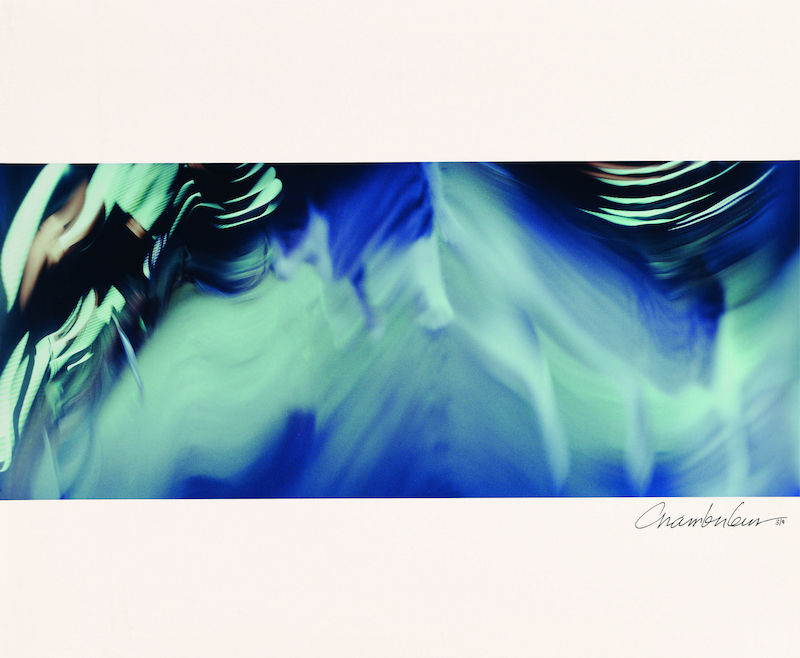
John Chamberlain Studio Lite IX (1989)
Photo: © 2015 Fairweather & Fairweather LTD/Artists Rights Society (ARS), New York
As for the sculptural works, the show features two late works, Pastoraldebris (2007) and Bloodydrivetrain (2007), which are composed of bright steel painted and chromium-plated parts configured to resemble flowers in bloom.
The twisted metal parts of Gondola Charles Olson (1982), which together create the impression of a discarded automobile chassis, lie on a floor-level platform. The sculpture is an early example of Chamberlain’s experimentation with large-scale works. For a work made from the remnants of a car, the horizontal shape, according to Greve, actually reminded the humor-minded artist of a boat.

John Chamberlain Gondola Charles Olson (1982) installation view.
Photo: © 2015 Fairweather & Fairweather LTD/Artists Rights Society (ARS), New York
Also on view is a wall piece titled Silver Plait (1976); its earthy color tone and distinct wall-mounted installation offer a nice balance to the overall presentation, and ease the transition between the sculptural works and photographs, while works such as Studio Lite IX (1989), Untitled (1992), or Untitled (1995) contain clear links to the artist’s more popular installations both in terms of color palette and carefully composed abstraction.
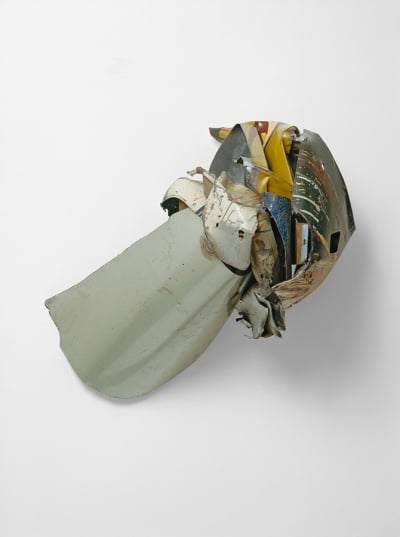
John Chamberlain Silver Plait (1976).
Photo: © 2015 Fairweather & Fairweather LTD/Artists Rights Society (ARS), New York
Throughout his lifetime, critics at times found it difficult to place Chamberlain’s work in the context of art historical movements. While his sculptures fall somewhere between Abstract Expressionism, Minimalism, and Pop art, their unique character makes them difficult to pin down.
The artist also rejected suggestions that his works reflected some sort of social commentary or contained political undercurrents. Rather, his work was more the product of the environment of deeply-embedded American consumerist culture to which he was exposed throughout his lifetime. Perhaps the subject matter is also the reason why the artist’s market has remained strong over the years.
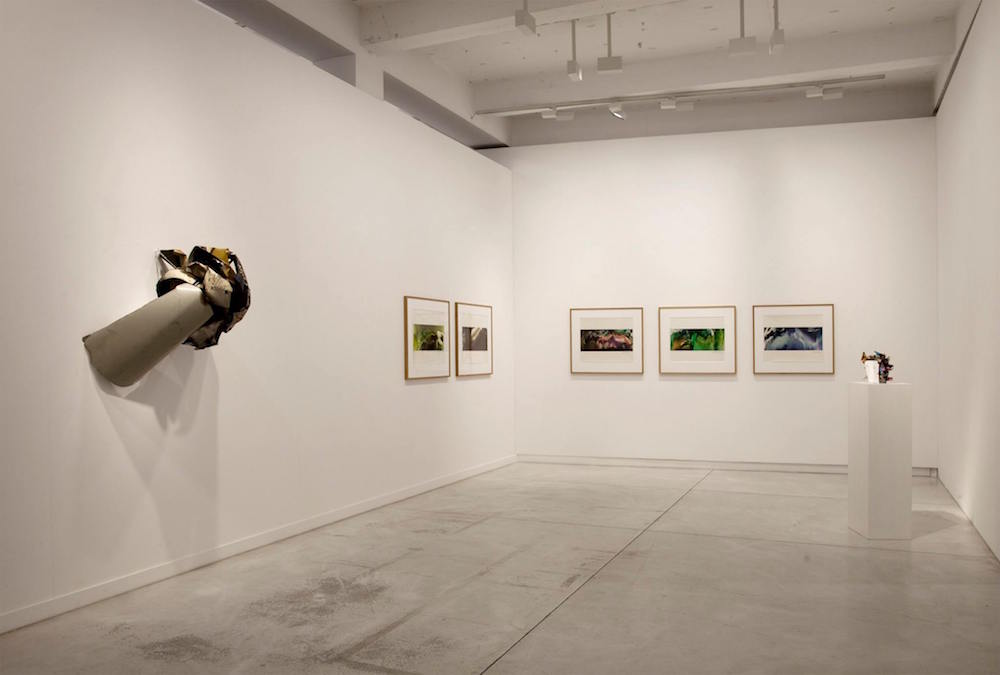
John Chamberlain Sculpture & Photography at Galerie Karsten Greve, Cologne.
Photo: © 2015 Fairweather & Fairweather LTD/Artists Rights Society (ARS), New York